Perhaps more importantly, Capcom’s first proper reveal of RE Revelation’s gameplay comes as a relief for anyone expecting a hectic, RE5-like pace, in which horror and tension is subdued with all out violence in a almost fear-less shooting gallery of shorts. Revelations, although sharing the same over-the-shoulder viewpoint, is a far slower affair focusing on unsuspecting scares and fewer, but far tougher enemies. In this respect it faithfully builds upon the original PSX games whilst bringing all the benefits of RE4’s vastly superior control and camera system.
So, lets take a look.
Visually, from what we can see, it looks like the quality of both the character and environment modelling is basically identical across the cut-scenes and gameplay. Almost nothing has been lost in terms of detail and precision, sans a small error in lighting when in targeting mode, but we’ll talk about that a little later. Characters feature a reasonable amount of geometric detail, but mostly, the really fine stuff – like the small elements of clothing, round look of the arms – is accomplished through the use of normal mapping in combination with solid texture work.
Through the use of the 3DS’ fixed-function, multiple texture-layered approach to rendering effects, we can see clear implementation of normal maps, adding finer details to the characters, along with specular reflections to highlight gloss, moisture and other similar properties.
Environments too, benefit from having similar effects. Parts of the walls, floors, and various other objects are normal mapped, with some surfaces – like metal pipes – getting specular, and others simply using the more common diffuse map in order to scatter light across the surface. However, these are used somewhat sparingly, with the majority of the environment using less of a multi-layered approach.
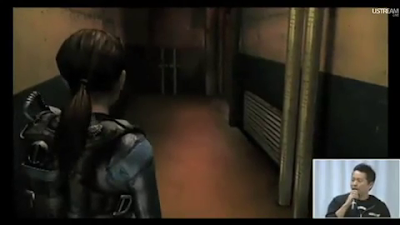
Alongside the game’s use of detailed normal mapped characters and enclosed, but also reasonably intricate scenery, the lighting engine is perhaps the most impressive component of the title’s feature-set. RE Revelations takes full advantage of the 3DS’ ability to handle per-pixel based lighting calculations, and as a result sees some key environmental objects casting dynamic lights which actively illuminate and shade both the characters and surrounding environment.
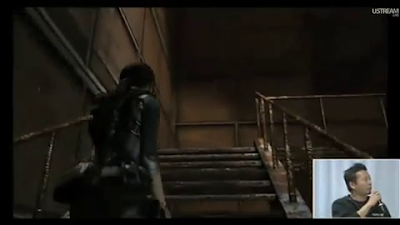
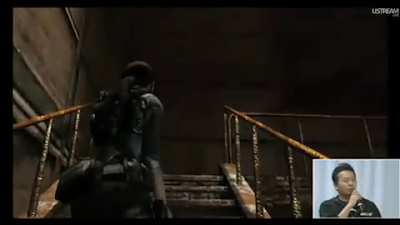
The lamp hanging above the stairwell for example, whilst swinging from side to side, projects a shadow which moves and changes according to the position of the light source itself. The environment also seems to be accurately lit according to where the lightsource is projecting from, the angle, intensity etc. Other elements, such as the texture layer based shader effects – reflections in particular, especially on normal mapping – are affected, with certain surfaces shining as light passes over them, before dimming as levels reduce.
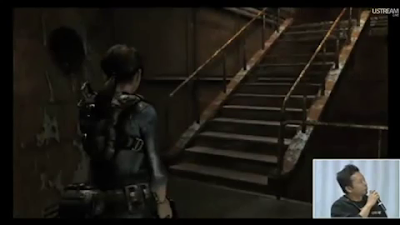
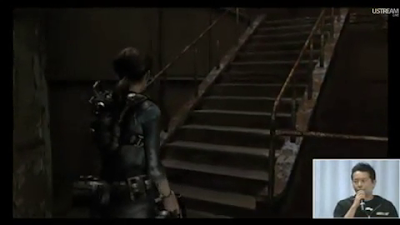
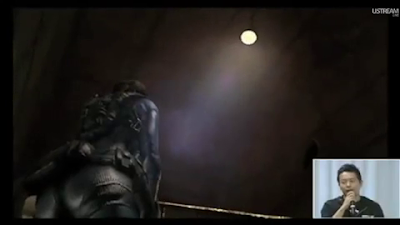
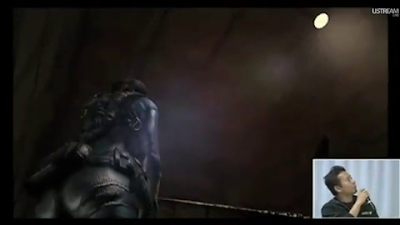
The characters benefit greatly from the real-time, per-pixel lighting implementation, with considerable depth being added to them, and the scene as a whole. This is nicely backed up with subtle use of self-shadowing, which complements the dynamic nature of the lighting and its accuracy.
Occasionally though, there are times when the game’s lighting system perhaps isn’t quite as accurate. When switching to targeting mode there is some noticeable polygon jittering, along with what looks like slightly flatter lighting. Like with the PSP, the reason from this seems to stem from both a lack of precision with geometry co-ordinate calculations, and what looks like a lack of per-pixel lighting when in this mode – on the character’s arm at least, its still present in the environment.
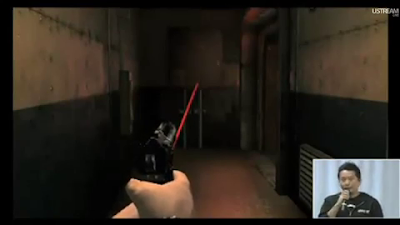
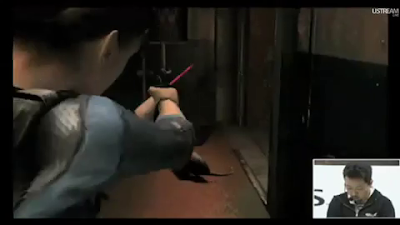
We can also see evidence of low quality shadow filtering, no doubt used to save on bandwidth, and what looks like low-resolution shadows in general. Take a look at Jill’s shadow, paying particular attention to her right hand. The effect looks like PCF, a cheap method of filtering used on some PS3 titles in order to save memory.
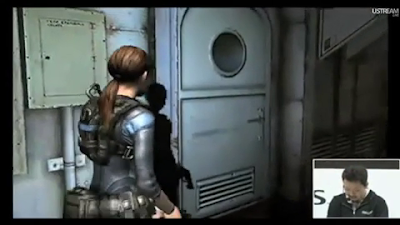
Of course, the plentiful use of such an advanced feature-set comes at the cost of environmental size and scope. From what we’ve seen so far, RE Revelations mainly takes place in tight, enclosed spaces with little in the way of distant, horizon-based scenery. The enemies we’ve seen so far, also rely a lot more on being normal mapped than constructed via lots of geometry.
Having the game set in mostly enclosed environments not only allows Capcom to bring a foreboding amount of atmosphere to the proceedings, but also to carefully budget the engine’s graphical load. High levels of bump-mapping and shader-like effects have a large memory and processing cost, so by restricting the draw distance and sheer overall complexity of any given scene, more of that budget can be spent on these effects whilst retaining that target 30fps performance.
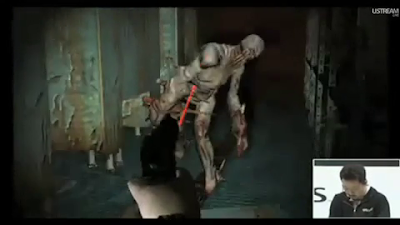
In its current state, Revelations frequently runs at 30fps in areas which doesn’t tax the engine too greatly – usually in sparse corridors or when there are no enemies around. In more complex scenes, ones which currently add in a human-size foe into the mix, framerate dips below 30fps and down to around 20fps for brief periods. No visible screen tearing seems to be present (although the poor video encoding makes it hard to tell) so the game appears to be running with v-sync enabled. This would explain the drop to 20fps when the engine is pushing a heavier load – drop to 20fps rather than tear frames when the engine cannot render them in time.
Although, with nearly a year to go and at only 20% complete at this stage, such performance issues are likely to be sorted out by the time of release. Regardless, RE Revelations is still a mightily impressive display of the 3DS’ capabilities. Here you’ve got some nice precision lighting not seen in any iPhone title to date, and plentiful supply of shader-like effects being generated by the system’s fixed-function hardware. There’s nothing else that is quite on the same level currently on competing mobile devices, and this is effectively first generation software.
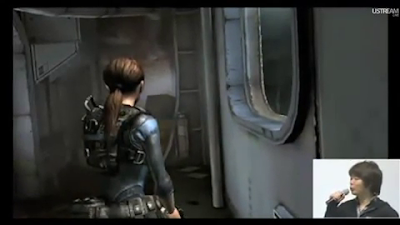
Beyond the visuals, it’s great to finally have what looks like a classically inspired instalment in the Resident Evil franchise, based on fear rather than adrenaline-centric action. Resident Evil 4 was a great leap forward, with arguably the right balance of action and atmosphere in order to generate horror. RE5 however, was a huge disappointment. Focusing purely on shooting… lots and lots of shooting, it massively diminished the series trademark tone. With Revelations, Capcom appear to be putting this right.

What an excellent article. Its a pity its not more known/publicised.
ReplyDelete